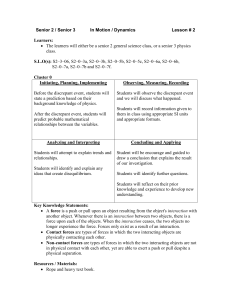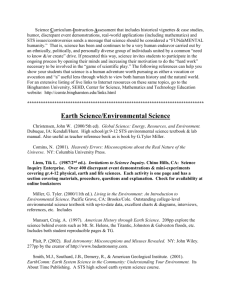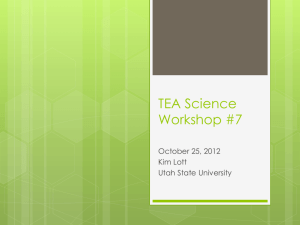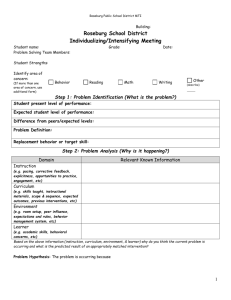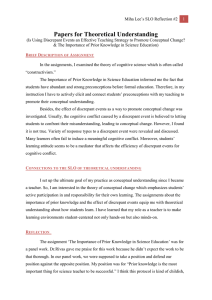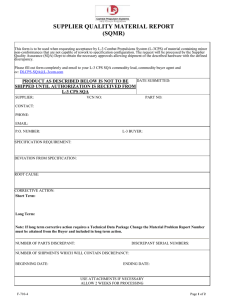SLO #1
advertisement
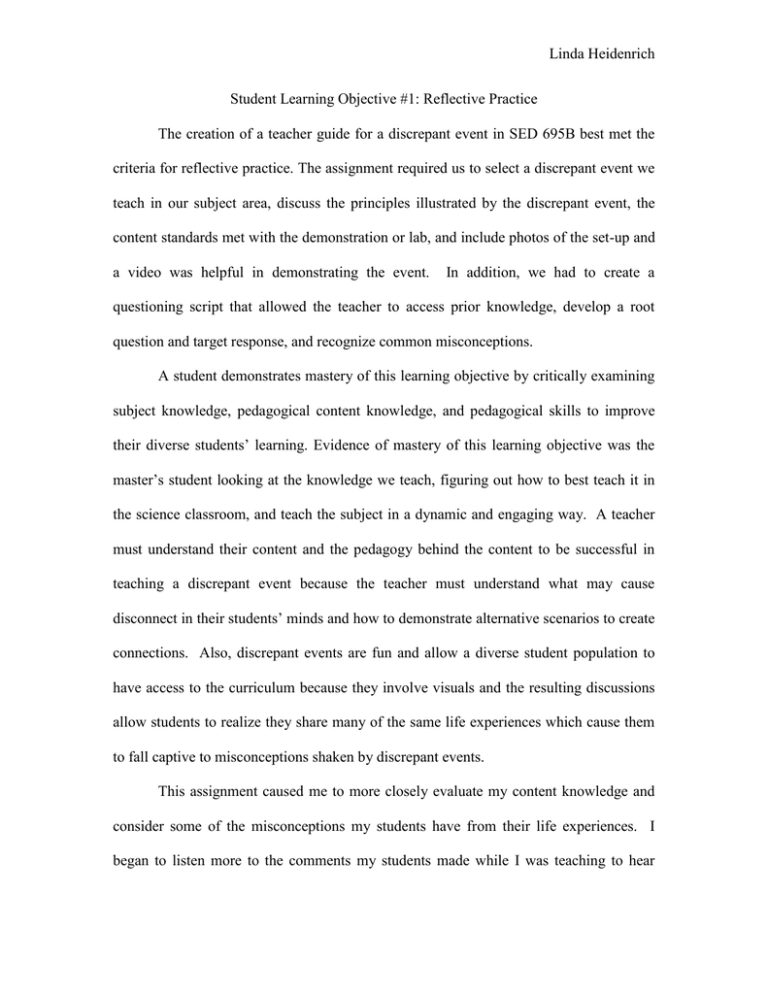
Linda Heidenrich Student Learning Objective #1: Reflective Practice The creation of a teacher guide for a discrepant event in SED 695B best met the criteria for reflective practice. The assignment required us to select a discrepant event we teach in our subject area, discuss the principles illustrated by the discrepant event, the content standards met with the demonstration or lab, and include photos of the set-up and a video was helpful in demonstrating the event. In addition, we had to create a questioning script that allowed the teacher to access prior knowledge, develop a root question and target response, and recognize common misconceptions. A student demonstrates mastery of this learning objective by critically examining subject knowledge, pedagogical content knowledge, and pedagogical skills to improve their diverse students’ learning. Evidence of mastery of this learning objective was the master’s student looking at the knowledge we teach, figuring out how to best teach it in the science classroom, and teach the subject in a dynamic and engaging way. A teacher must understand their content and the pedagogy behind the content to be successful in teaching a discrepant event because the teacher must understand what may cause disconnect in their students’ minds and how to demonstrate alternative scenarios to create connections. Also, discrepant events are fun and allow a diverse student population to have access to the curriculum because they involve visuals and the resulting discussions allow students to realize they share many of the same life experiences which cause them to fall captive to misconceptions shaken by discrepant events. This assignment caused me to more closely evaluate my content knowledge and consider some of the misconceptions my students have from their life experiences. I began to listen more to the comments my students made while I was teaching to hear Linda Heidenrich some of the misconceptions they have developed throughout their life and school career. I acted on some of those misconceptions and created opportunities to visualize and discuss other circumstances that expand my students’ ideas. I realized a demonstration can be a very teachable moment and allows a variety of students to become more engaged in the learning in the science classroom. Although Biology does not lend itself to as many discrepant event visualizations as compared to Biology or Chemistry, I began to reexamine my lesson planning to find more opportunities to insert discrepant events, or events that create wonder and doubt. Even when the opportunity to conduct a discrepant event does not present itself, I try to find an article or a discussion topic that allows me to understand my students’ misconceptions and develop their correct ideas in more depth. The result has been more engaging dialogue in my classroom and more interest in the subject of science. Often, students would state they understand science more now than they did before and this comment usually resulted from a situation where I had demonstrated or discussed something they had not thought about, or had been exposed to, in relation to the subject. A recent example of this new teaching approach involved biotechnology. I presented a small introduction to biotechnology and then had my students brainstorm different products or medical breakthroughs that utilized biotechnology. Nearly all of my class discussed stem cells as an example of biotechnology. This answer resulted from a previous discussion on stem cells so I had to clarify that stem cells could be seen as biotechnology, although better examples existed. I then discussed what they buy at the store, different sources of protection for police officers and diseases such as diabetes. Several weeks later, I have students asking me if something they saw at the store was created by biotechnology. By reflecting on the Linda Heidenrich content I am teaching, listening to my students, and incorporating more previous examples while explaining distinctions, more engaging and relevant dialogue is occurring in my class.
